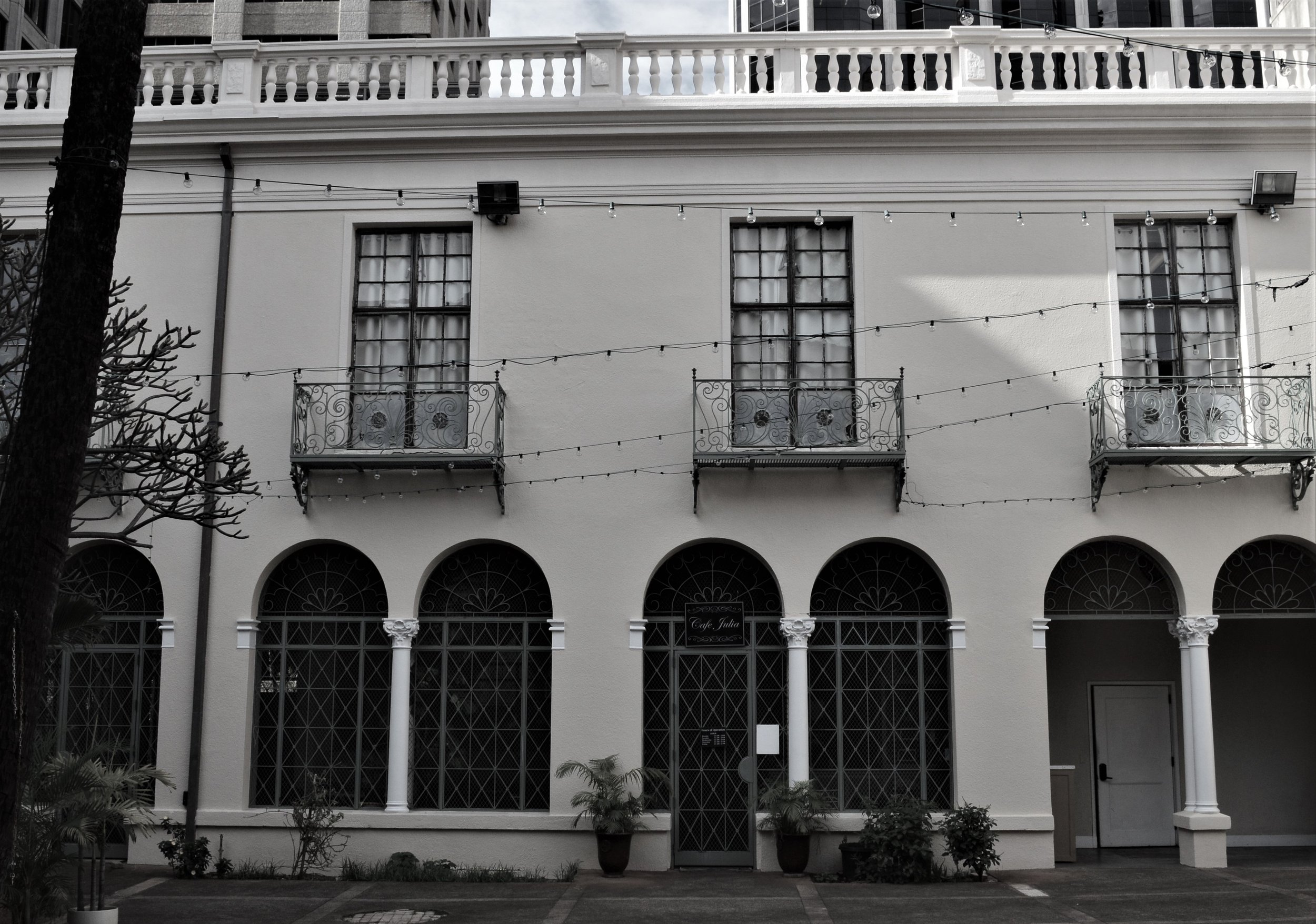Sites to Behold

It goes without saying, of course, that the Hawai‘i we know today would be nothing without everything else that came before. And with a past as rich as the one the islands can claim, it should come as no surprise that it requires more than a little TLC from the community to keep the state’s most treasured remnants of the past in tip-top shape.
Enter: Historic Hawai‘i Foundation. Established in 1974, the statewide nonprofit helps to preserve buildings, structures, objects, sites and districts, as well as promote an awareness and appreciation for their significance.
“We really believe that historic places are important because, well, they have a special power,” says Beth Iwata, Historic Hawai‘i Foundation director of development. “They give people a chance to feel a connection to the past; to the people that came before them.
“It’s not just about architecture or history. I think there’s a lot more going on than that,” she adds. “By learning about different types of places, I think it informs you, and I think you can learn to appreciate others as well.”
To that end, Historic Hawai‘i Foundation provides advocacy for historic places, meeting with legislators to influence policy and acting as a consulting party for various ongoing projects. The idea, says Iwata, is to serve as a voice for these voiceless places of the past in an effort to minimize any impact to them. Ideally, repairing and adapting old places is the route to take instead of simply demolishing or tearing down an old building.
Perhaps more importantly, though, the organization has a bevy of educational tools the community may utilize to do its part. Questions regarding historical sites may be directed to Historic Hawai‘i Foundation via phone, or answered online through its Preservation Resource Center.
There, everything from the economic benefits of protecting historic spaces may be found, as well as facts and myths, information on how to list a home on the Hawai‘i Register of Historic Places, trends and issues, and a host of other topics. An “Ask an Expert” page also invites questions from the public, with past submissions running the gamut of “How can I maintain the exterior of an historic building?” to “How can I provide ADA access to a historic property?” and “I just bought an old house and want to research its history. How do I start?”
“Old places give people the chance to feel a connection to the broader community — to the past and to people who came before us,” says Iwata. “They tell us who we are, as well as teach us about other people and the rich diversity of Hawai‘i. They teach us beauty and sacredness. They also provide economic sustainability.”
And here’s something to note: Accord- ing to Iwata, to qualify to be on either the national or state Register of Historic Places, a site must be at least 50 years old and be important in some way.
“It’s not just about the age,” she explains. “Either it was created by some- one who’s famous or who’s associated with a historical figure.”
In addition to all that, Historic Hawai‘i Foundation also helps to manage grant funding, which typically aids nonprofits to help with rehabilitation efforts, and also offers activities, workshops and other events that both educate and entertain the community.
In fact, coming up on Saturday, Oct. 19, is its annual benefit fundraiser at The Royal Hawaiian. During the evening, Historic Hawai‘i Foundation will honor Beadie Kanahele Dawson as its Kama‘aina of the Year 2019. (Dawson is perhaps most noted for her work in helping to restore ‘Iolani Palace.)
Attending events such as this one help to support the organization’s ongoing efforts. Other ways to help include signing up as a member — which grants access to advanced invitations to events and discounted admission — as well as volunteer at activities or with research.
For her part, Iwata has been with Historic Hawai‘i Foundation for five years. And though the staff may be small, she admits, its members have accomplished quite a bit.
Last year, for example, the organization accomplished 494 actions of assistance, 22 educational programs, preservation grants for six sites and helped to pass legislation in support of protecting historic places. Historic Hawai‘i Foundation also upped its student engagement, hosting a youth video project and art exhibit, and collaborated with schools.
“I think that it involves a lot of creativity and a wide array of work, so every day is different — just the feeling that we’re helping to make Hawai‘i a better place,” adds Iwata of what she enjoys about her work with the nonprofit. “I love my job because it provides the opportunity to meet a wide range of people and also the chance to appreciate Hawai‘i’s rich layers of history.”
For more information on Historic Hawai‘i Foundation and its upcoming benefit, and to access its Preservation Resource Center, visit historichawaii.org. sonyopeninhawaii.com/ volunteers.
